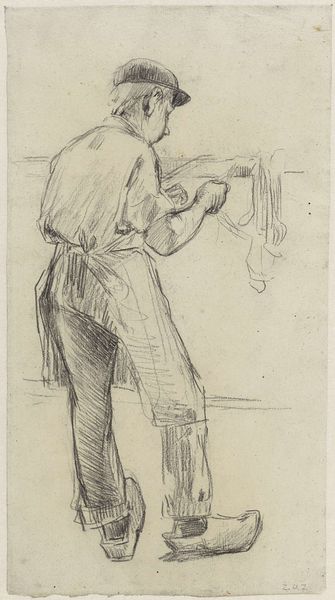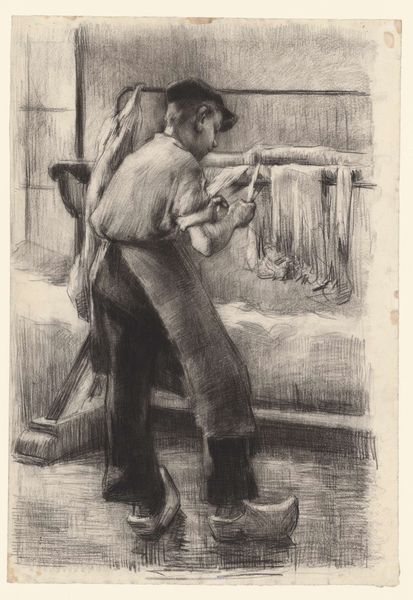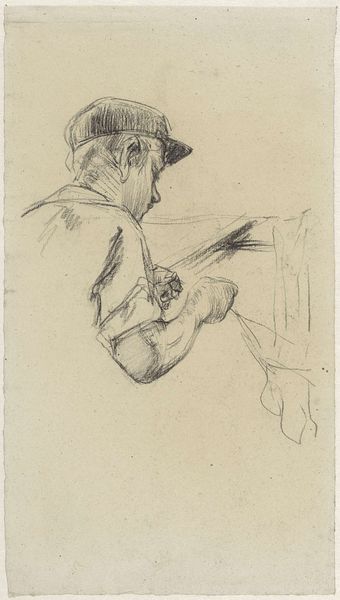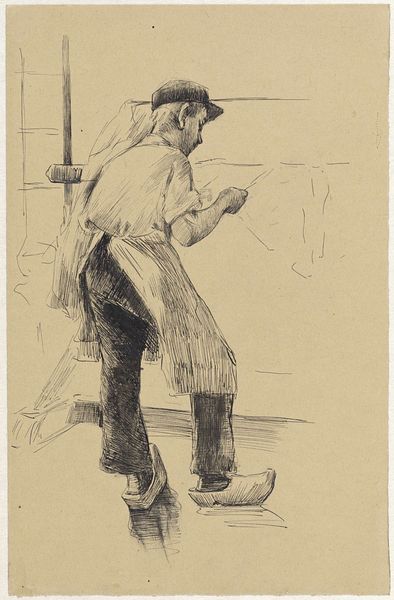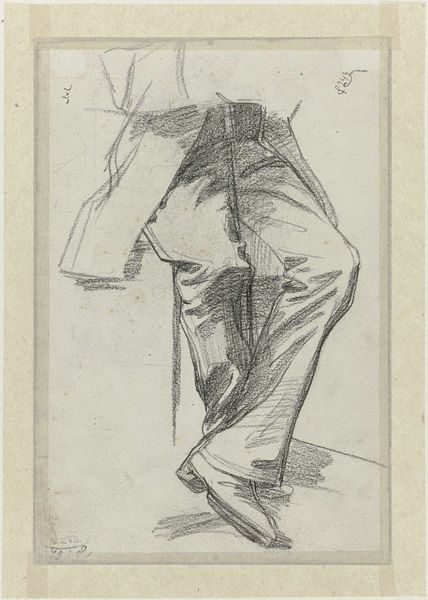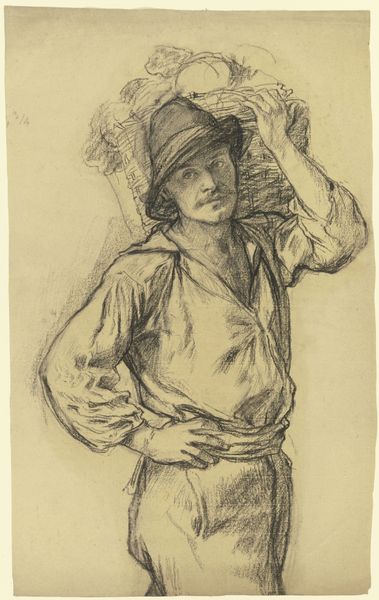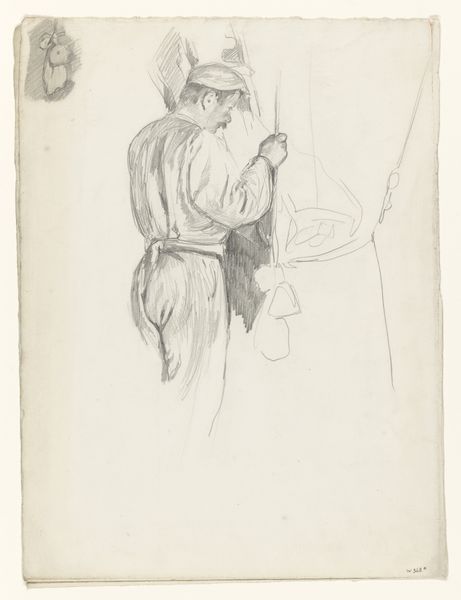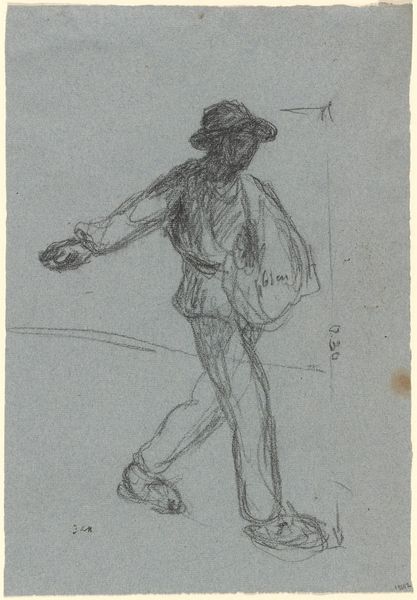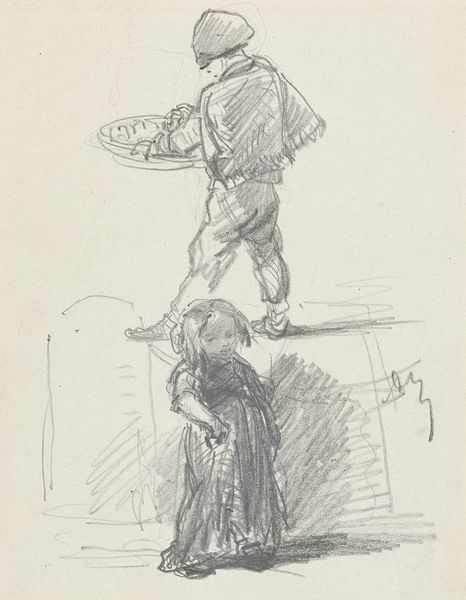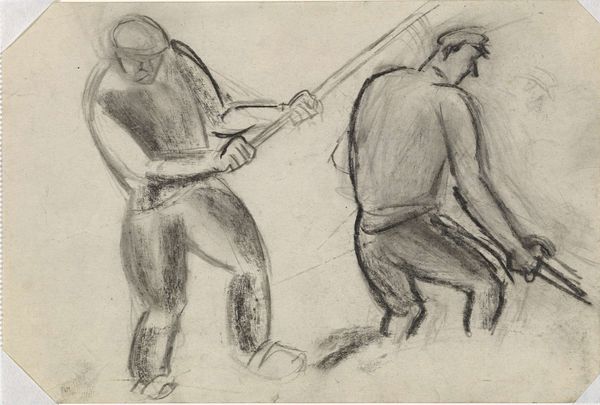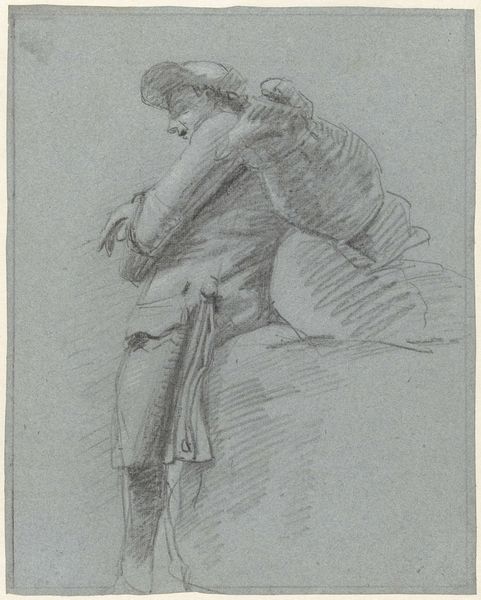
Fabrieksjongen aan het werk in een katoenververij 1868 - 1892
0:00
0:00
drawing, pencil, graphite
#
portrait
#
drawing
#
amateur sketch
#
light pencil work
#
quirky sketch
#
dutch-golden-age
#
pencil sketch
#
personal sketchbook
#
idea generation sketch
#
pen-ink sketch
#
pencil
#
graphite
#
sketchbook drawing
#
genre-painting
#
sketchbook art
#
realism
#
initial sketch
Dimensions: height 346 mm, width 256 mm
Copyright: Rijks Museum: Open Domain
Editor: This is "Fabrieksjongen aan het werk in een katoenververij" or "Factory Boy Working in a Cotton Dyeing Mill", a pencil drawing by Anthon Gerhard Alexander van Rappard, created sometime between 1868 and 1892. It feels very immediate, almost like a snapshot of everyday life. What strikes you about this drawing? Curator: It captures a specific moment, doesn't it? Note the young boy's wooden shoes – a detail which anchors the work in a particular time and place, rural Holland amidst industrialization. What does that symbol – the shoes – communicate to you? Editor: They feel both practical and perhaps a sign of poverty or rural life. Curator: Precisely. And consider the boy’s labour in a cotton dyeing mill. Cotton was a key commodity connecting distant economies through patterns of colonial extraction and production. Van Rappard subtly hints at the interwoven realities of global trade and local labor. Doesn't that infuse the image with additional layers of meaning? Editor: It does. It makes you think about how his everyday life connected to a much larger global network. Curator: Also note how Van Rappard depicts the young boy’s downcast gaze, partially hidden face, and focus on work, but he did chose to immortalize it with an image that brings humanity to industrial work. This draws us into the complex relationship between progress, labor, and youth. What is your personal response? Editor: I hadn't considered the gaze. It seems like a very quiet statement on working-class life. Thinking about this makes the drawing so much richer. Curator: Indeed. This humble sketch acts as a powerful cultural document, reflecting on themes of industrialization, labour, and childhood—topics still incredibly resonant today. Editor: Absolutely. Thanks for shedding light on all of this! It's amazing how a seemingly simple sketch can contain such profound cultural and historical significance.
Comments
No comments
Be the first to comment and join the conversation on the ultimate creative platform.
